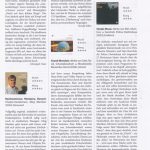splendid account of all these pieces
Johannes BRAHMS (1833-1897)
Piano Sonata No. 2 in F sharp minor, Op. 2 (1852) [27:51]
Scherzo in E-flat minor, Op. 4 (1851) [9:06]
Piano Sonata No. 3 in F minor, Op. 5 (1853) [39:50]
Oleg Marshev (piano)
rec. July 2021, Cultural Institute, Milan, Italy
DANACORD DACOCD900 [77:03]
This is early Brahms. His biographer Lawrence Erb says bluntly that there was no obvious career opening for the young man: he had to “continue playing in low sailors’ haunts” and pursue any opportunity for giving “cheap lessons and arranging popular tunes for brass bands or for piano”. It was not until the spring of 1853 that Brahms embarked on his first professional tour away from Hamburg, as accompanist to the celebrated Hungarian violinist Eduard Reményi.
In Hamburg in 1851, Brahms wrote Scherzo in E-flat minor, his earliest surviving wholly original piece. It was one of the works that he showed to Robert and Clara Schumann when he arrived at their home, unannounced, in 1853. He also played it at a recital in Weimar the same year; Franz Liszt, who was in the audience, was deeply impressed. The piece is structured as an extended ternary form, with two trio sections rather than the traditional one. The main scherzo is played three times with some modification. Interestingly, Brahms denied any Chopin influence, and in fact the style owes more to Beethoven and Schumann. There is youthful impulsiveness bur little sense of humour: it is not a joke as the name would imply. The pianist must contrast the “demonic” character of the scherzo material with the obvious charm of the first trio. Oleg Marshev certainly infuses the proceedings with a “whiff of sulphur”.
The Piano Sonata No. 2, completed in November 1852, was dedicated to Joseph Joachim. It predates the Piano Sonata No. 1 in C major, Op. 1, by a year or so. Schumann’s influence haunts this striking music with its considerable technical demands. There are four contrasting movements. The Allegro non troppo, ma energico is presented in standard sonata form, with definite nods to Schumann’s Fantasie, Op.17. The slow movement is a beautiful set of three variations on the song Verstohlen geht der Mond auf (The Moon rises stealthily). The third-movement Scherzo is based on a short motif from the preceding Andante. Critics found the final movement the weakest. This is especially clear in the closing cadenza’s trills and scales untypical of Brahms. Yet there is much beauty in the opening Sostenuto introduction. The main theme, related to the opening movement, makes the work cyclical in design. The interpreter requires skill in realising many moods, from the tempestuous opening bars to the almost impressionistic feel of the second variation in the Andante, by way of the mystical second subject of the first movement. This is well achieved here.
The latest work here is the 1853 Piano Sonata No. 3, a large composition that lasts just shy of forty minutes. Unusually, it has five movements. The Allegro maestoso is powerful and economical of material. The two main subjects have their well contrasted effect. Additional themes are introduced in the development section, but there is no confusion. One of the themes reflects the well-known “fate” motif from Beethoven’s 5th Symphony. The second movement is prefaced by three lines of a poem by Otto Inkermann under the pseudonym C.O. Sternau: “Through evening’s shade, the pale moon gleams / While rapt in love’s ecstatic dreams / Two hearts are fondly beating.” Some commentators have suggested that this is the nearest Brahms came to writing programme music; it does bring lovers to mind. The romantic atmosphere is put aside in the robust scherzo with its energetic opening theme and trio with “long melodic curves”.
Now comes the unexpected movement, the bleak Intermezzo based on the main theme from the earlier Andante, subtitled “Rückblick” (Remembrance). There is something of a funeral march here. One critic suggested that clearly “the course of true love has not run smooth”. Despite this negative energy, the finale is optimistic and ultimately triumphant. One might feel that this is the wrong way to end this Sonata, but for me it is successful and satisfying.
In 2005, Oleg Marshev has recorded Brahms’s Piano Sonata No. 1, the Variations on a Theme by Robert Schumann, Op. 9 and the Ballades, Op. 10 (DACOCD 643 – review). He now completes his survey of Brahms’s early piano music. (Only the 13 Variations on a Hungarian Melody in D major remain from the period between 1850 and 1853.) His playing here cannot be faulted. He gives a splendid account of all these pieces. There is less competition with recordings of Brahms’s early piano music, so it is good to have a new edition of these two Sonatas and the Scherzo.
Peter Quantrill’s helpful booklet notes give all the details required for appreciating this CD. Mind you, the font is a little small for aging eyes, and there is no download at the Danacord website.
This is a supremely rewarding exploration of Brahms’s early piano music. It is a moot point how one feels these pieces match up to the later Intermezzi, Ballades and Variations: they do deserve our attention and interest. Marshev is a great advocate. The advertising blurb correctly describes this disc as presenting a “trio of thunderous roars from a young keyboard lion”. Brahms was still in his teens when he composed these works. And, perhaps most important of all, it was through them that he won the friendship and support of Robert Schumann and his wife Clara.
John France


